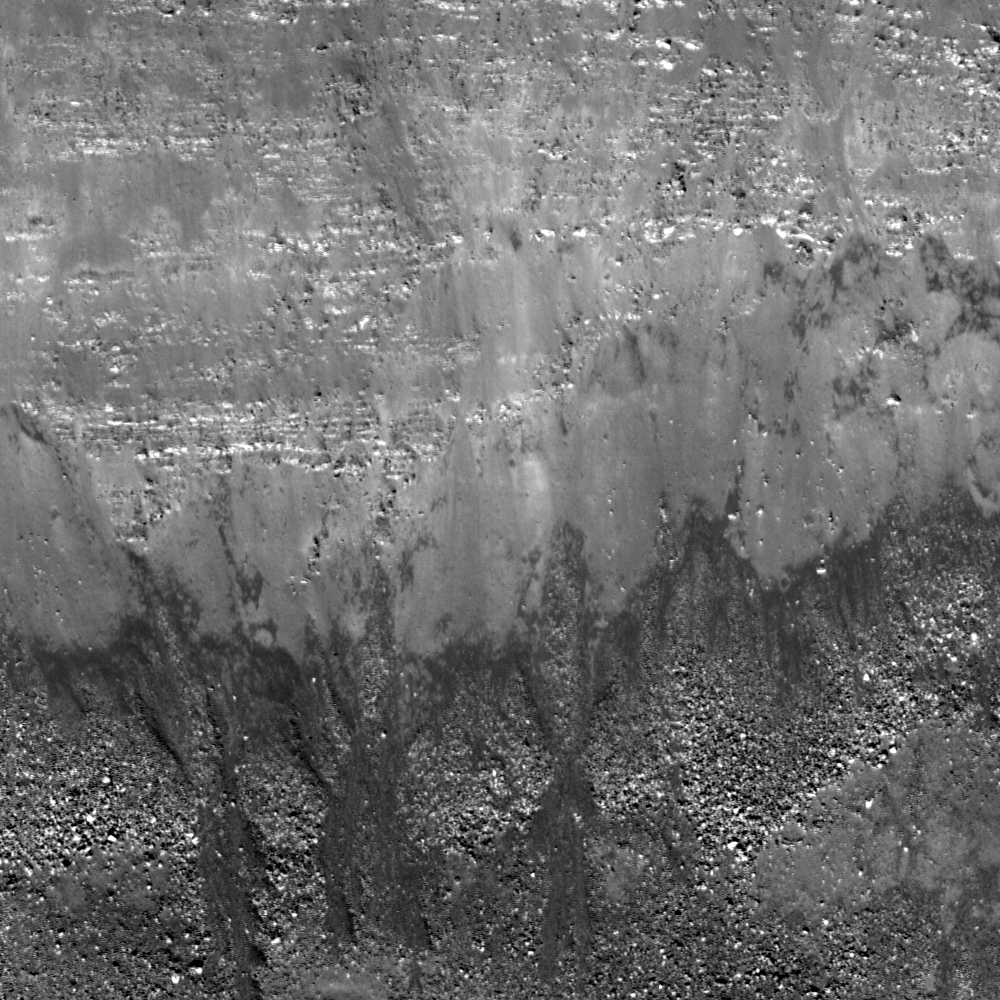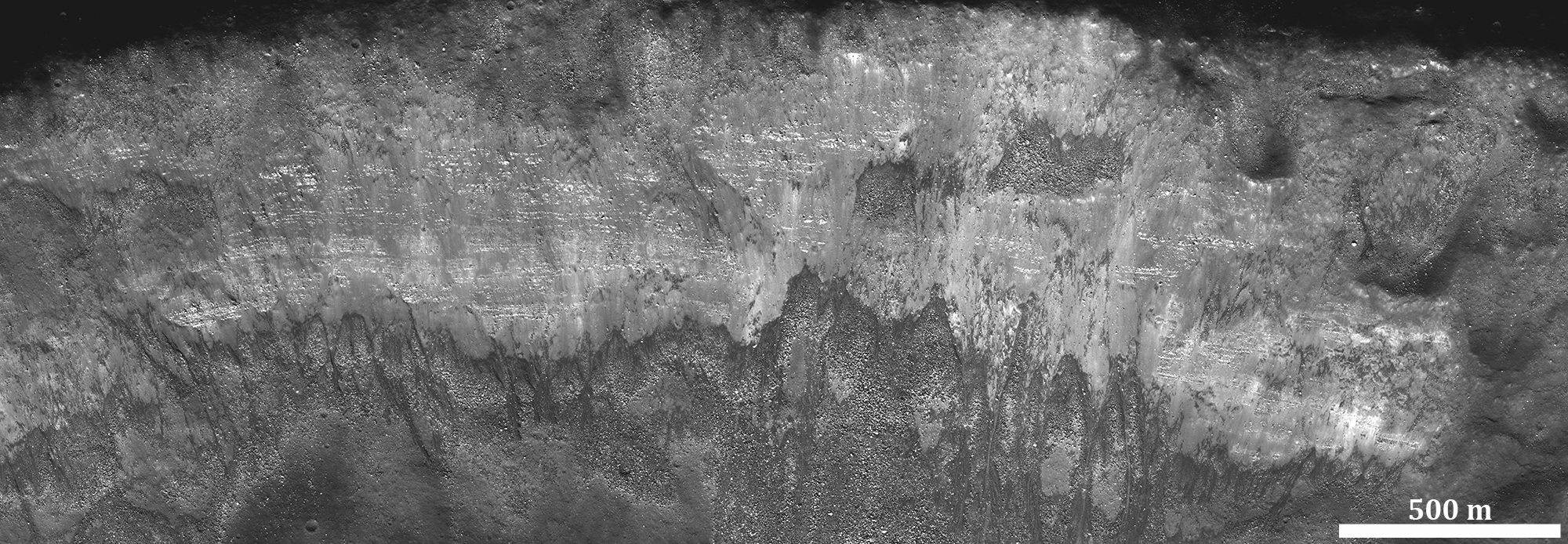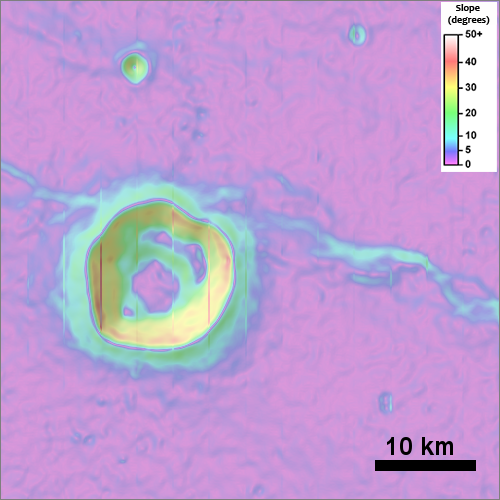
Gravity, as well as seismic events, keep the upper slopes of the east of wall of Herigonius crater (326.254°E, 13.321°S) swept clean by moving material downslope. Herigonius is a large crater roughly 16 km in diameter located at the southernmost extent of Oceanus Procellarum. Mass wasting reveals banded layers of mare basalt. Individual layers can be traced north to south across much of the wall of Herigonius, and as a whole, represent multiple broad, thin lava flows (see image of the east wall below).
Blocky overhangs indicate areas more resistant to mass wasting and are comprised of the more coherent parts of the lava flows. However, layers of mare basalt are not exposed in all of the walls of Herigonius crater and are best observed in the eastern portion. The entire region is dominated by mare lava flows, but why are the layers so prominent in the eastern wall?
Elevation data derived from the LROC WAC instrument (GLD100) allows investigation of the topography and slopes of the Herigonius crater. The slope map (below), which is a measure of the average change in topography from pixel to pixel, shows that the eastern wall of Herigonius crater is one of the steepest parts of the crater. This steepness may help to continuously expose fresh new materials and basalt layers. Alternatively, the coherent layers of the prominent mare flows in this region are more resistant to downslope movements and can support steeper slopes that are, in turn, more resistant to the build up of debris.
Explore the east wall in full resolution as well as the entire crater.
Related posts:
Apollo Basin Mare in a Sea of Highlands
Published by J. Stopar on 8 April 2014

